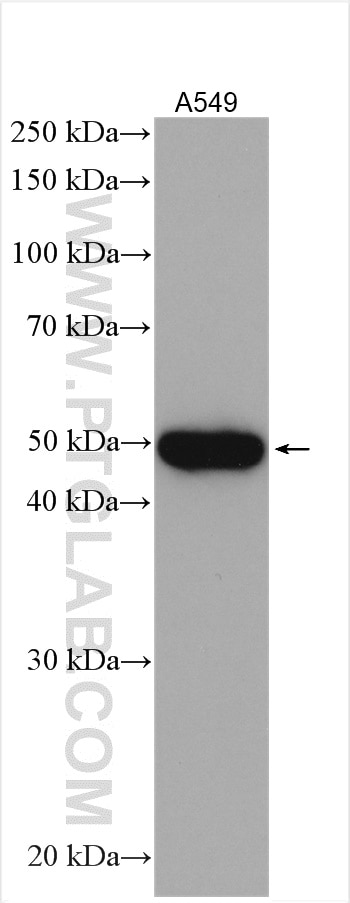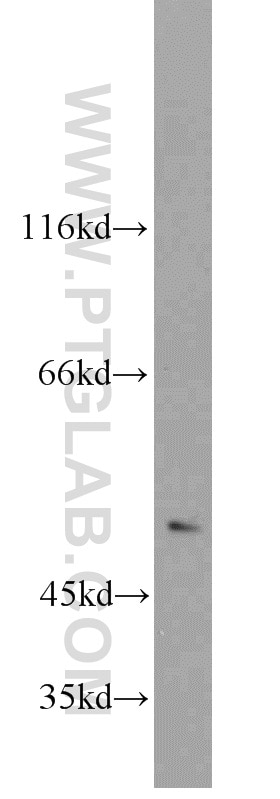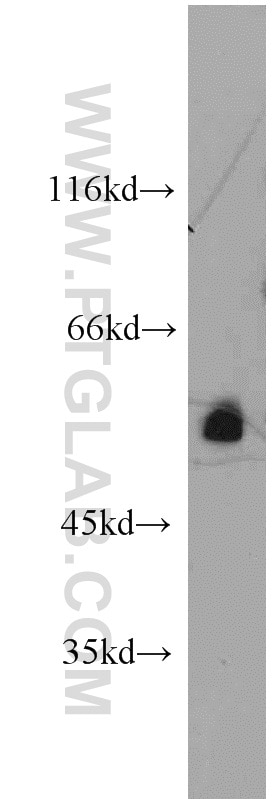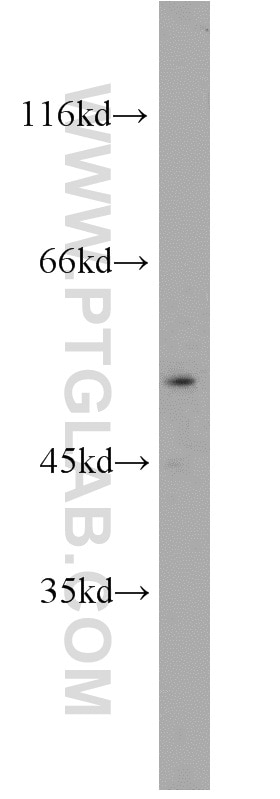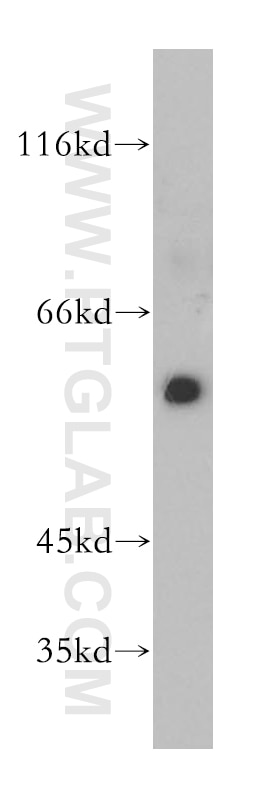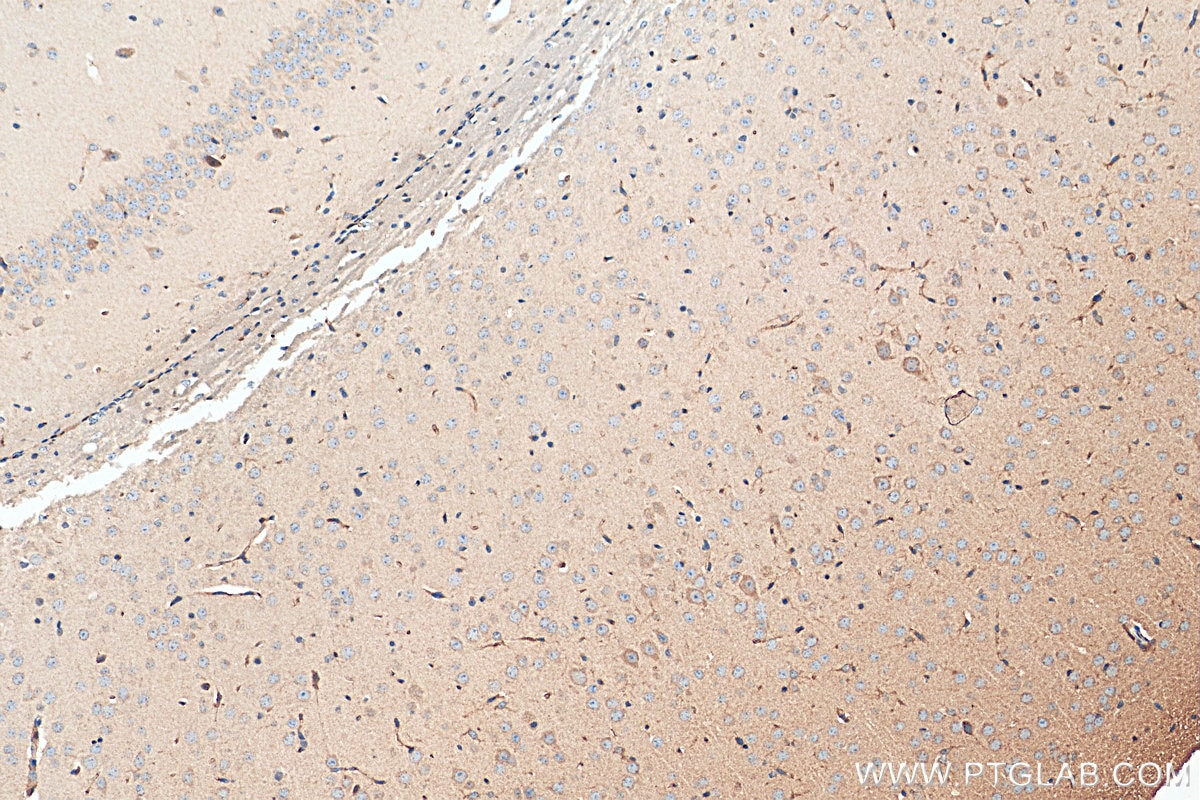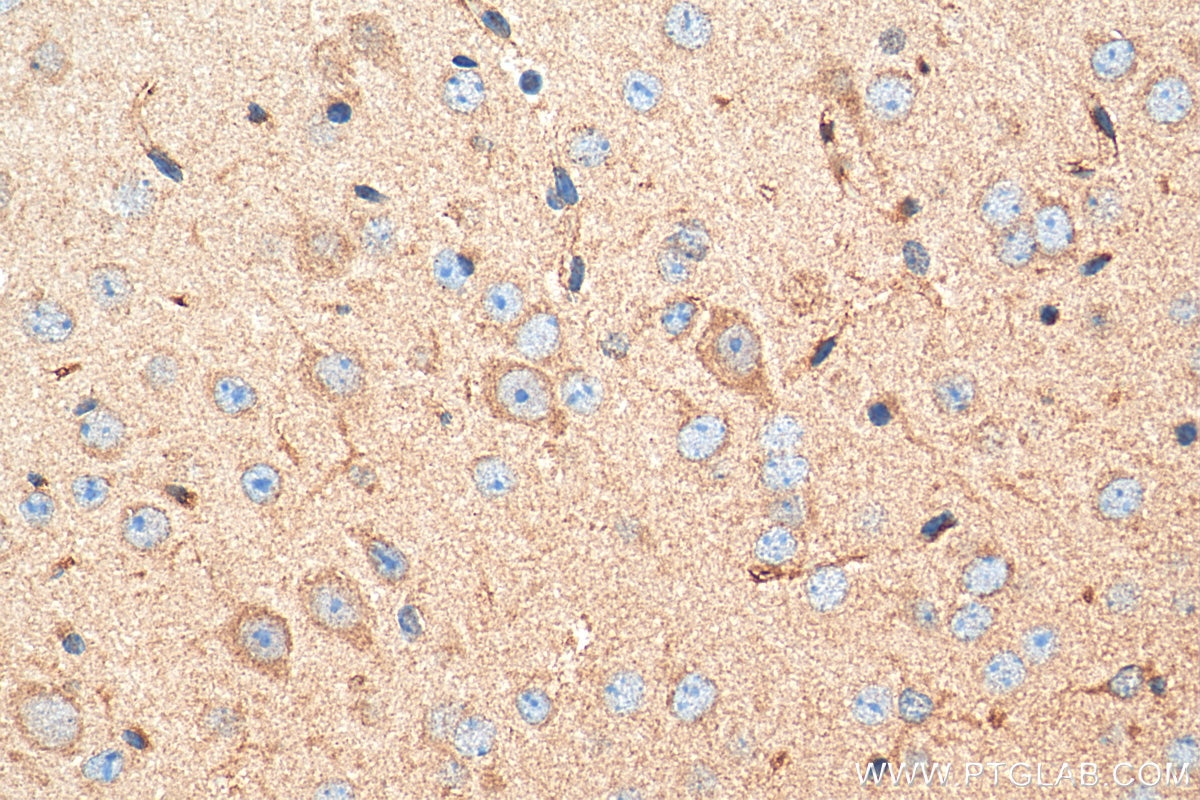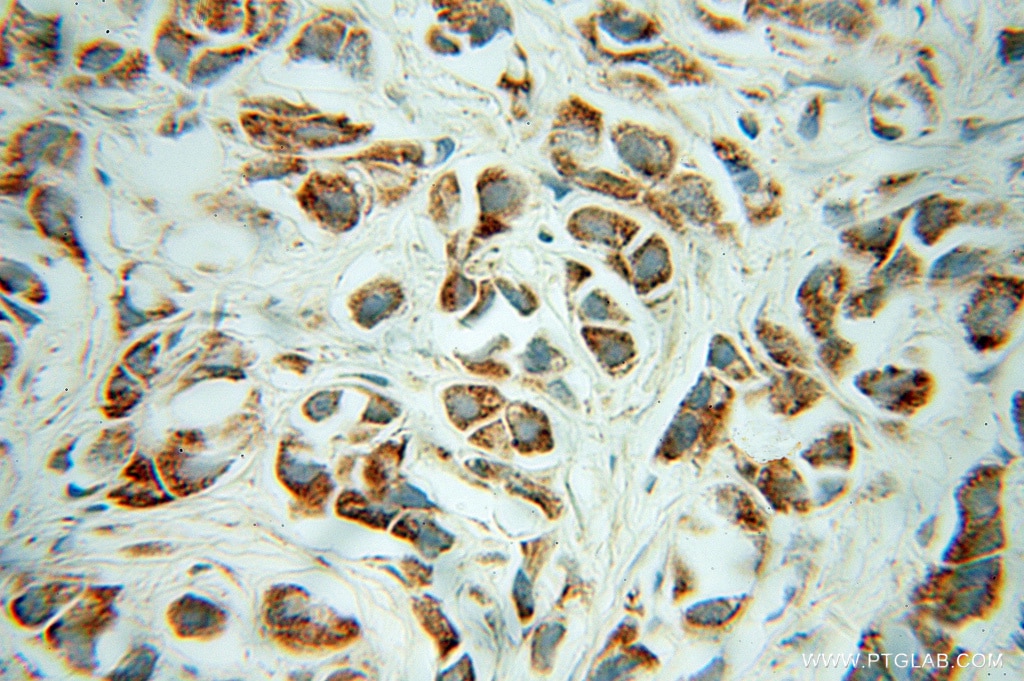- Phare
- Validé par KD/KO
Anticorps Polyclonal de lapin anti-CHRNA3
CHRNA3 Polyclonal Antibody for WB, IHC, ELISA
Hôte / Isotype
Lapin / IgG
Réactivité testée
Humain, souris et plus (1)
Applications
WB, IHC, IF, ELISA
Conjugaison
Non conjugué
N° de cat : 10333-1-AP
Synonymes
Galerie de données de validation
Applications testées
| Résultats positifs en WB | cellules A549, cellules HEK-293, cellules HepG2, tissu cérébral de souris, tissu de thymus de souris |
| Résultats positifs en IHC | tissu cérébral de souris, tissu de cancer de la prostate humain il est suggéré de démasquer l'antigène avec un tampon de TE buffer pH 9.0; (*) À défaut, 'le démasquage de l'antigène peut être 'effectué avec un tampon citrate pH 6,0. |
Dilution recommandée
| Application | Dilution |
|---|---|
| Western Blot (WB) | WB : 1:1000-1:6000 |
| Immunohistochimie (IHC) | IHC : 1:500-1:2000 |
| It is recommended that this reagent should be titrated in each testing system to obtain optimal results. | |
| Sample-dependent, check data in validation data gallery | |
Applications publiées
| KD/KO | See 1 publications below |
| WB | See 5 publications below |
| IHC | See 1 publications below |
| IF | See 2 publications below |
| FC | See 1 publications below |
Informations sur le produit
10333-1-AP cible CHRNA3 dans les applications de WB, IHC, IF, ELISA et montre une réactivité avec des échantillons Humain, souris
| Réactivité | Humain, souris |
| Réactivité citée | Humain, poisson-zèbre, souris |
| Hôte / Isotype | Lapin / IgG |
| Clonalité | Polyclonal |
| Type | Anticorps |
| Immunogène | CHRNA3 Protéine recombinante Ag0272 |
| Nom complet | cholinergic receptor, nicotinic, alpha 3 |
| Masse moléculaire calculée | 57 kDa |
| Poids moléculaire observé | 50-55 kDa |
| Numéro d’acquisition GenBank | BC000513 |
| Symbole du gène | CHRNA3 |
| Identification du gène (NCBI) | 1136 |
| Conjugaison | Non conjugué |
| Forme | Liquide |
| Méthode de purification | Purification par affinité contre l'antigène |
| Tampon de stockage | PBS with 0.02% sodium azide and 50% glycerol |
| Conditions de stockage | Stocker à -20°C. Stable pendant un an après l'expédition. L'aliquotage n'est pas nécessaire pour le stockage à -20oC Les 20ul contiennent 0,1% de BSA. |
Informations générales
CHRNA3, also named as NACHRA3, LNCR2 and PAOD2, is neuronal type nAChR subunits. It is a member of the nicotinic acetylcholine receptor family, which plays an important role in calcium regulation, neuronal development, and cognitive functions. Polymorphisms in this gene have been associated with an increased risk of smoking initiation and an increased susceptibility to lung cancer.
Protocole
| Product Specific Protocols | |
|---|---|
| WB protocol for CHRNA3 antibody 10333-1-AP | Download protocol |
| IHC protocol for CHRNA3 antibody 10333-1-AP | Download protocol |
| Standard Protocols | |
|---|---|
| Click here to view our Standard Protocols |
Publications
| Species | Application | Title |
|---|---|---|
Acta Pharmacol Sin Ursolic acid derivative UA312 ameliorates ionizing radiation-induced cardiotoxicity and neurodevelopmental toxicity in zebrafish via targeting chrna3 and grik5 | ||
Hum Mol Genet Transcriptome analysis and molecular signature of human retinal pigment epithelium. | ||
J Invest Dermatol Chrna5 is overexpressed in psoriasis patients and promotes psoriasis-like inflammation in mouse models. | ||
FASEB J The gut-brain axis rewired: adding a functional vagal nicotinic "sensory synapse" | ||
Mar Drugs Differential Expression of Nicotine Acetylcholine Receptors Associates with Human Breast Cancer and Mediates Antitumor Activity of αO-Conotoxin GeXIVA. | ||
PLoS One Nicotine Activates YAP1 through nAChRs Mediated Signaling in Esophageal Squamous Cell Cancer (ESCC).
|
